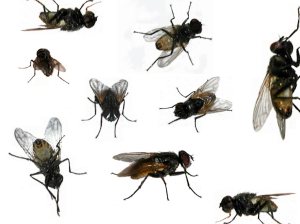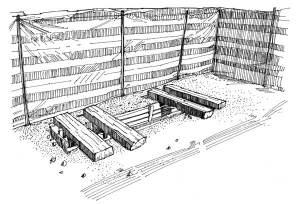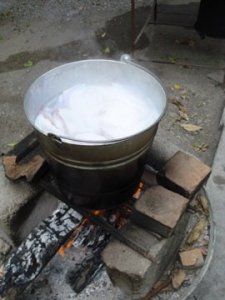By Kellene Bishop
While the thought of waste management isn’t sexy or glamorous, I wouldn’t be doing anyone any favors if I didn’t teach about sanitation in greater detail. So here are a few things that you’ve just GOT to know about do-it-yourself sanitation for a prolonged period of time.
Sorry to have to say this, but human waste is a huge danger in a disaster. Many folks will just give up on any semblance of sanitation in desperate circumstances. When I lived in the Philippines, it was nothing to see a woman stop where she was going and crouch down and urinate wherever she stood. It was also common for people to simply throw their human waste out their windows…as if it was now marked as someone else’s problem. Now picture what may happen if someone lives in a high rise apartment in the center of a city not being able to flush their toilets for a week. They aren’t just going to hold it, right? I guarantee that “civilization” as you know it will cease when it comes to waste disposal. But wait. There’s even better news. A person who is healthy and has regular bowel movements produces two to three pints of urine daily and one pound of feces per day. I don’t even want to think about what happens when someone is sick from eating unsafe food, or stressed out. Ugh. And that’s just ONE person.
As shared previously, one small area of poor sanitation can kill everyone within a 50 mile radius. So it’s critical that you’re just as diligent with your sanitation preparedness as you are your food, water, and shelter. How can a bad sanitation area kill so many in such a wide area? The perpetrators are rodents, flies, and bacteria. Bad bacteria can travel three hundred feet from the original site of “yuck.” Flies live to spread feces and such from one place to another. And rodents are attracted to it as well. If they go in, they go out, and they then take the death germs with them. Sounds awful, doesn’t it? So you’ve got be mindful of not creating a festival of killer bacteria in the first place.
There’s quite the cocktail of formidable germs lurking in a human waste area. Streptococcus, staphylococcus, E. coli and shigella bacteria, some salmonella, Norwalk virus, hepatitis A virus, the common cold virus, and various sexually transmitted organisms.
Immediately after a power outage you may still be able to use your sewer system by pouring water directly into the toilet bowl. But this method uses up a lot of valuable water and you run the risk of having sewage in your home when the home system backs up. I wouldn’t recommend living long term that way. Instead, plug the toilet up with a tennis ball to avoid sewage coming out in the event of a blockage. And then set up alternative waste disposal options.
One option is to dig a trench. Your trench should be 2 feet wide, at the very minimum, 1 food deep and four feet long or more. More importantly it should be FAR way from any type of living arrangements—especially FOOD! Since the bacteria can travel 300 feet, you might want to think about having your trench that far way from your living area. After each trench use, cover the area with dirt, lime, wood ash, I-Pee, or ChemiSan. Also, I recommend sprinkling a bit of diatomaceous earth (DE) after each use as it will keep the flies and other insects away, and thus further prevent the spreading of germs. (Note: Human waste should NEVER be used as compost for food gardens.) The downside of digging the trench is that it takes up vital physical energy. Thus some of the simpler methods may be necessary instead.
Another option is to use a 5-gallon bucket with a toilet seat lid. After each use, be sure to layer it with one of the aforementioned items. ChemiSan has biodegradable bags that you can use to line the 5-gallon buckets with. This will enable you to take the bags, bury them and know that you haven’t furthered the contamination in your area. (Check their site to find distributors in your area.) For our readiness, we have lots of heavy duty plastic bags, DE, and lime on hand specifically for this purpose.
Whatever method you use, try to construct a covering/shelter for the area. This isn’t just about dignity and privacy. Germs in feces can be propelled through the air easily. Thus, leaving the waste area immediately after applying the covering of dirt, lime, etc is important. Having some type of a door or at least a plastic sheeting is a good idea as well.
Be sure that everyone is diligent in cleaning their hands for at least 20 seconds after using the facilities. The same goes if you are changing a baby or elderly diaper. Be sure to get in between the fingers and under the fingernails each time you wash your hands. If you’re relegated to using hand-sanitizer, be sure to apply enough to be just as thorough as you would if you had soap and running water.
When disposing of disposable feminine products, they should be burned after use, not put with the other waste in the trench or bucket. The same goes for disposable diapers. However, cloth diapers and their pins should be boiled, then bleached, and then exposed to the sun for a couple of hours. (Do NOT use your solar oven for this sanitation purpose)
And lastly, you may want to invest in room deodorizers now while you can get them frequently for FREE with coupons. While you may not fathom being able to use 6 cans of Febreeze now, you’ll be grateful that you have it when your “community” is forced to take care of business the early 1900’s way.
Copyright 2009 Preparedness Pro & Kellene Bishop. All rights reserved. You are welcome to repost this information so long as it is credited to Preparedness Pro & Kellene Bishop.




